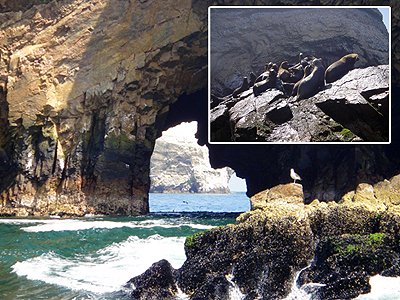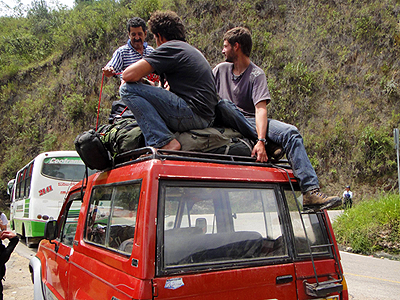Peru is the third largest country in South America (about three times the size of California), and contains 28 different climates, from the arid desert, temperate to frigid temperatures of the rugged Andes mountains, to the warm, humid tropical rain forests. In addition, Peru has some of the largest fisheries in the world, and is home to over 1,700 species of birds, more than any other country in the world.
Romain, still in Peru, now travels south to Arequipa, a capital city founded in 1540 on the site of an ancient Incan town. The picturesque city, nestled in a valley of green countryside, is overlooked by impressive volcanoes and snow covered mountains. The city has magnificent Colonial-era spanish buildings, made of pearly white volcanic rock, which glisten when bathed in sunlight, thus it is affectionately called “La Cuidad Blanca” (“the White City”).
Traveling north along the coast lie the Islas Ballestas, located off the shores of Paracas. These rocky formations are home to colonies of birds, penguins and sea lions. The thriving marine life makes it an excellent destination to watch whales, dolphins, sea lions, leatherneck turtles and more.

Romain now crosses the border into Ecuador, the smallest of the Andean countries. Straddling two hemispheres, Ecuador is situated along the equatorial line it is named after, bordering Columbia and Peru, and is sometimes referred to as “The Center of the World”.
Puerto Lopez is a small fishing village on the Pacific Coast where people flock to see the majestic humpback whales, who migrate north about 500 miles every season to reach the warm waters of the Ecuadorean coast to mate and raise their young. The courting whales perform spectacular displays, with impressive leaps and tail thrashing. A few miles offshore is Isla de la Plata (nicknamed “The Poor Man's Galapagos”) which is surrounded by coral reefs, making it an ideal destination for divers. Here we see Romain taking advantage of another outstanding feature of RGM’s North Pointer; the watch is water resistant to 300 feet, making it an excellent timepiece both on land or sea.
The area around the present day town of San Agustin was inhabited by an ancient Indian civilization which left hundreds of mysterious carved statues depicting humans and animals, varying in size from 8 inches to 23 ft. The scenery is stunning, with dozens of waterfalls tumbling through the jungle to join the Río Magdalena.
As Colombia’s greatest river, the Magdalena winds 924 miles through many canyons before eventually winding up in the Caribbean Sea. Stay with us as we follow Romain to the Far East.
Next: The Land of the Rising Sun




